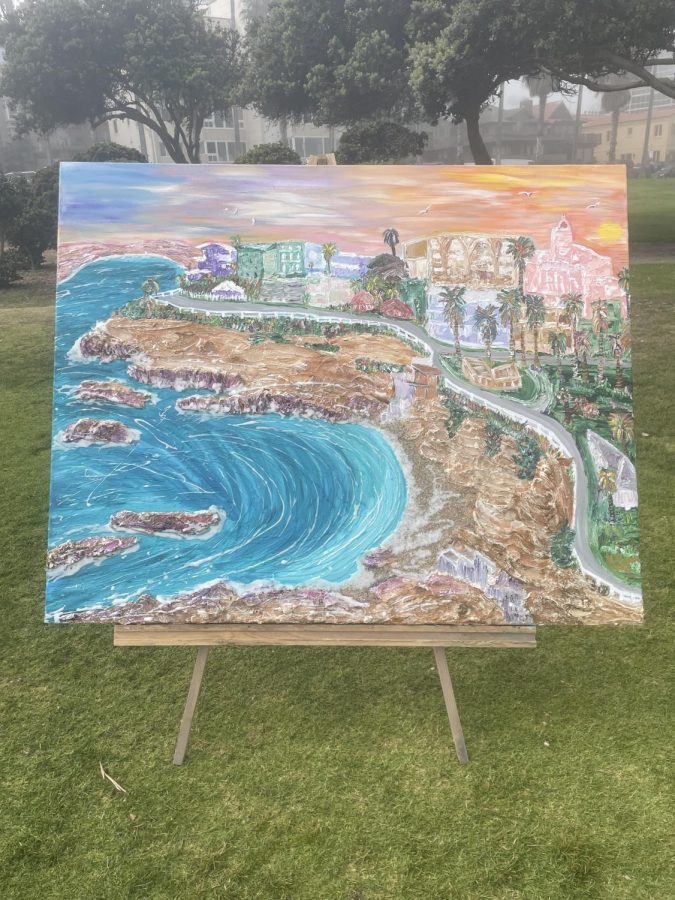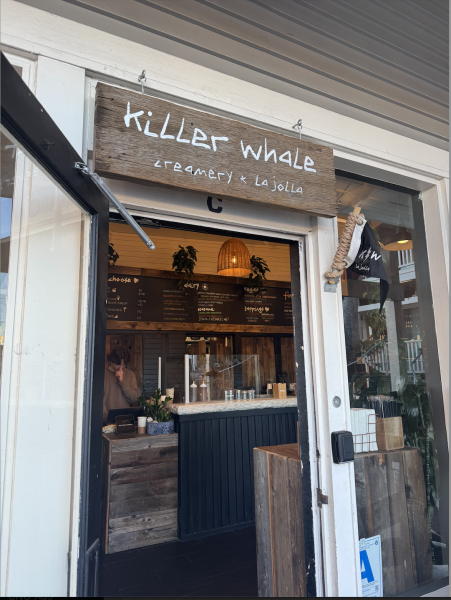Sold Out
Vendors respond to a new law banning street vending.
Jack, an artist who sells paintings and photographs in Scripps Park, specializes in paintings including different mediums; he adds resin, sand, and rock to his artwork to make his landscapes more realistic.
The sun’s out, the sky is blue, and there’s a nice ocean breeze by the cove. Tourists are milling around and locals are chatting with friends and family, walking by Children’s Pool or on their way to a new restaurant. But every few steps, visitors and residents alike pause to take in the scenery; not that of the crashing waves and lounging seals, but of tables of jewelry and artwork propped up on easels.
However you may feel about the street vendors in La Jolla, you won’t be seeing them for much longer. On June 1, 2022, legislation will go into effect that prohibits vendors from selling their merchandise in Scripps Park, Children’s Pool, and the Coast Boulevard boardwalk. The ordinance, which passed in an 8-1 vote, will also ban vendors from Balboa Park and various beaches for a few months out of the year.
“It’s always been cultural,” explained Jack, who, like other vendors who were interviewed, preferred to only use his first name. “But what’s happened, unfortunately, is that it’s become a place to sell jewelry, T-shirts, and hats. It’s become a swap meet.” Jack specializes in 3D paintings, or paintings that include different mediums; he paints with resin to accentuate the glimmer of the ocean, sprinkles sand into landscapes of beaches, and adds rock to his paintings of Torrey Pines. He believes that street vending should be about bringing the culture of a place to life, not an easy way to make money off of tourists.
But Bob Evans, president of the La Jolla Parks & Beaches board, seems to think vending has caused a different problem. According to the La Jolla Light, he has expressed that “vending has taken over the beach entrances, the pedestrian pathways, destroyed landscaping and taken away the public’s use of these natural resources.”
Emily, who sells crystals and jewelry that she makes herself, disagrees. “I feel that this adds to the culture and energy of being a tourist in San Diego,” she commented. That said, she also understands why people want regulation, but feels that in the end it is beneficial for La Jolla to feature small businesses and allow merchants to sell their wares.
Although the city council seems to think that seeing the vendors detracts from tourists’ visits, no tourists cared to comment on the present situation. The retailers, however, seem to enjoy speaking to tourists; Tish, who also sells handmade necklaces, bracelets, and crystals, said, “I enjoy being in this beautiful place and talking to tourists,” adding that it was a nice activity during retirement.
For some, selling artwork and trinkets in touristy destinations is a hobby, but for others, it is their main source of income. “I understand why they [passed the ordinance],” explained Stephanie, a vendor of fashion made in India, “but it’s sad for those that are just starting [their businesses].” Stephanie doesn’t always sell in the same place, so the law will not have a big impact on her, but she acknowledged how hard it can be for someone who has begun a new business and doesn’t have much startup money.
Even if we may not be seeing street vendors in Scripps Park, Children’s Pool, or the Coast Boulevard boardwalk, that doesn’t mean they won’t still be around. They will be allowed to operate on side streets year-round and on some beaches during certain months out of the year. “I’m going to keep going no matter what. I may not be in this space, but I’m hoping that I can continue selling,” concluded Emily.

Lucy is a senior and Lead Content Editor for The Tower. This is her fourth year on the staff and second on the editorial team, and she can’t wait to...







